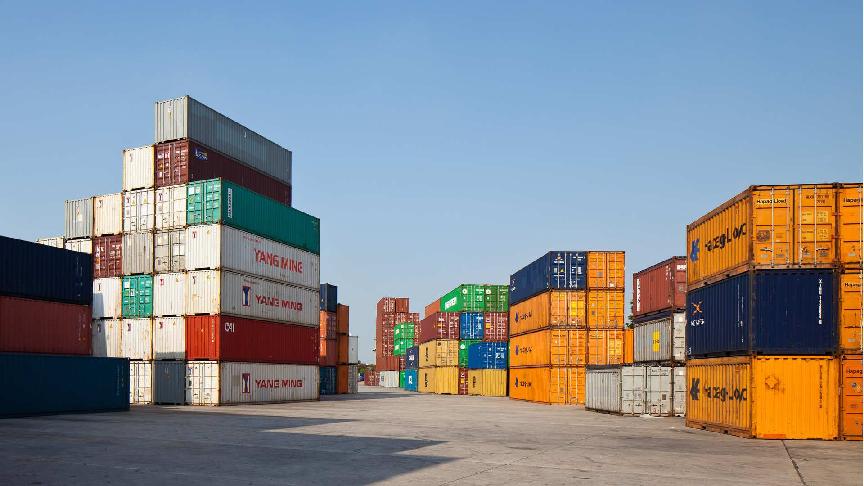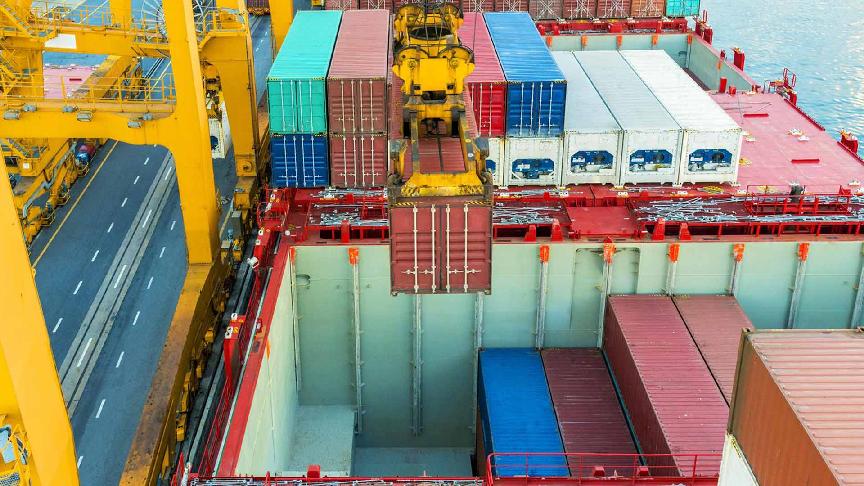16 August 2024 (Lloyd's List) - THE world’s premier container ports chalked up a second successive year of muted volume growth during 2023, in a 12-month period ending with contrasting fortunes for the leading export and import hubs.
Last year’s combined throughput tally hit 690.3m teu, up 0.8% from 685.2m teu on 2022’s elite port performance, edging ever closer to the 700m teu mark.
The subdued growth figure, however, was down on the previous year (1.7%), continuing the trend of the ‘tepid 20s’ post-Covid in a sobering reality for the sector.
Throughout 2023, the fragmentation of volume growth was striking. Yet one core theme remained from the previous year.
Once again it was the Chinese majors and ports in the Middle East where the lead share of growth was concentrated.
China’s colossal export centres saw business continue to tick along with the country’s resurgent economy, with trade activity energised by the full lifting of long-drawn-out pandemic border measures during the early stages of 2023.
In the Middle East, volume growth was reported across much of the region. But this was especially prevalent among the major oil-exporting nations, where a concerted effort to diversify economies continues to provide robust demand for containerised trade.
China’s exploits and Middle East gains helped offset significant setbacks in throughput at US terminals. The end of the pandemic freight boom and overstocked inventories led to sharp decreases at key gateways on the east, west and Gulf coasts.
European ports also finished 2023 worse off than when the year started, with the continent still gripped by inflationary pressures, high interest rates and the economic impact from the war in Ukraine.
Top 10
The elite of the elite performed strongly as a whole, with almost all ports among the top 10 rankings reporting a solid annual return.
Shanghai’s stranglehold over its rivals continues to show no sign of let-up after volumes nudged up almost 4% to 49.2m teu — a feat aided largely by a recalibration of river traffic and the additional count of hinterland cargoes.
Nevertheless, volumes are impressive. The fact Shanghai handled more than double that of seventh-ranked Busan is a case in point.
Initial 2024 throughput numbers suggest further increases for the coming year, putting the Chinese colossus on track to become the first port to celebrate annual handling figures of more than 50m teu.
Singapore, some 10m teu shy of Shanghai’s throughput tally, stayed second once more as it staved off the impact of wider geopolitical challenges to hold onto its crown as the world’s largest transhipment hub.
Meanwhile Ningbo-Zhoushan’s impressive near-6% rise in liftings meant it was ‘as you were’ for this year’s top three.
And this was the case for our top eight this year, in what was a rather uneventful affair in terms of rankings jostling.
Shenzhen proved the only one of these ports not to improve on last year’s total, in sharp contrast to rival export hubs in eastern and northern China, which bounced back strongly from Covid-era declines.
A renewed focus on exports and Western economies and on mainline trades impacted domestic cargo flows; however, this still only represented a 0.5% drop on 2022 box numbers.
Shenzhen’s slight blip, though, among the top 10 was overshadowed by the failings of Hong Kong, with the port’s traditional transhipment business continuing to diminish as shippers opt for direct shipments into China.
Throughput at 14.4m teu meant that volumes across the docks have decreased by as much as one-fifth in the space of two years, in a further fall from grace for what was the world’s largest container port 20 years ago — and, at its peak in 2007, handled more than 26m teu.
Hong Kong held onto its top 10 rankings, but only just.
Middle East giant Dubai jumped the queue to make a return to the top 10 as its strategy to focus on non-oil trades bore fruit.
As a result, Rotterdam gave way, as Europe’s largest container complex suffered at the hands of weaker consumer demand across the continent and the absence of Russian trade volumes.
China
The world’s reliance on China as the integral cog of the containerisation system and principal global export hub has been a core theme of the Lloyd’s List rankings since the late-1990s.
Talk of a supply chain shift and alternative sourcing to lessen the reliance on Chinese production and manufacturing may have grown louder in recent years, but the country’s prominent position is showing no sign of letting up anytime soon.
Indeed, China advanced its top 100 status in 2023 even further. The facts talk for themselves.
Last year, China’s volume contribution of 285m teu to the top 100 ports total represented 41.3% of overall trade, climbing 3.5% year on year.
The US continued to have the second-largest volume contribution — but at a touch over 50m teu, this is still less than one-fifth of China’s mammoth total.
Despite Haikou dropping out of the port rankings, the country also increased its top 100 quota to 25 with the addition of two of our three new entries — namely Yangpu and Shantou.
With China finally removing all Covid restrictions, there were some notable advancements in traffic too, as production was ramped up across much of the country.
Three of the top four largest percentage increases came at Chinese facilities: Qinzhou, Dongguan and Jiaxing. Jiaxing took the crown as China’s fastest-growing port — at least in percentage terms — jumping 17 slots on the ladder this year as volumes swelled nearly 20%.
However, it was also a Chinese port, Tangshan, that took the unwelcome accolade of being the worst-performing port across 2023, after a slump of more than one-third in traffic.
Asia, excluding China
Outside of China, growth in Asia was largely fragmented, but the region’s sprawling ports managed to improve on their 2022 performance, climbing 2.1% as a collective.
Asia’s three largest transhipment hubs, Singapore, Busan and Port Klang, all reversed volume losses — but growth was stunted, at least to some degree, by softening demand from key Western economies.
For the Vietnamese majors, throughput contractions were reported across the board as demand from its key trading partner the US fell sharply.
The region’s big success story came from India, where its ports duo of Mundra and Jawaharlal Nehru ended the year with robust growth as the country’s economy continues its rapid advance.
For Mundra, this meant a jump of close to 14% on its 2022 total — and with it, the prize as the region’s fastest-growing port last year.
North America
North American ports witnessed a rather forgettable 2023, as the post-Covid demand boom came to a crashing halt — and then some.
Port majors on the east, west and Gulf coasts all posted significant volume losses, leading to a regional total that came in some 11.7% lower than in 2022.
As many as six of the 10 largest throughput declines last year came from North American ports. The biggest deficit was witnessed at New York & New Jersey terminals, where liftings slumped by nearly 18%.
The Californian pairing of Los Angeles and Long Beach — North America’s busiest box ports — didn’t fare much better, with both chalking up losses of more than 12%.
The volume shortfall was not just restricted to the US. Canada’s premier port Vancouver also reported a similar year-on-year deficit, as one of nine North American ports to finish 2023 with volumes down by double-digit proportions.
The exception — or the only North American port to improve on its 2022 performance — came from Mexican major Manzanillo, where momentum in the nearshoring of manufacturing operations, particularly from Chinese enterprises, continues to drive volumes across the docks.
Middle East
Middle Eastern ports achieved the highest average growth rate in 2023, reflecting the region’s economic resilience and continued growth in non-oil sectors.
Saudi Ports helped lead the charge. The country’s largest port, Jeddah, notched up growth of more than 12%, while Dammam fared even better, posting figures up more than 13% on 2022’s total.
Dubai, as mentioned above, returned to the top 10, but it was domestic rival Abu Dhabi that stole some of its thunder, continuing its rapid surge up the rankings with its carrier-affiliated terminal tenants — notably China’s Cosco — aiding the port’s rise to prominence.
Abu Dhabi’s 13.7% jump in volumes helped the UAE port climb to a new high of 40 in the rankings.
Salalah came out as the sole port in the Middle East to post a lower total in 2023 on the previous year — a result that saw Oman’s principal hub drop out of the top 50 for its troubles.
Moving back into the top 100 was Damietta — and in some style. Following a decade-long hiatus, the Egyptian port racked up a phenomenal 60.2% rise in liftings over its quays after securing several new liner customers.
With Hapag-Lloyd setting up shop in Damietta as its new hub north of the Suez Canal, the port looks set to remain a rankings mainstay.
Northern Europe and the Mediterranean
In Northern Europe, all four of the region’s largest ports in the so-called ‘northern range’ reported dips in throughput for 2023.
Rotterdam, Antwerp-Bruges, Hamburg and Bremerhaven all finished the year posting high single-digit percentage losses — a fate largely attributable to the economic impact of the Russian war and low consumer demand.
Of the nine Northern European ports featured in the rankings, it was only Southampton that bucked the wider trend of volume damages — albeit with only minimal advances.
However, the UK was still not immune from the weak trade environment felt across the continent, with London hit by a close-to 10% drop in box numbers.
Meanwhile further south, ports dotted along the Mediterranean coastline had a mixed performance.
Growth was evident in the eastern Mediterranean, where terminals in Türkiye continue to benefit from significant investment in the country to expand seaborne trade. Ambarli was the most notable success story, with container trade up more than 10%.
In the western region, the major transhipment hubs suffered in much the same way as other European ports — with the exception of Gioia Tauro, which continued to benefit from MSC’s takeover of the port and the additional volumes coming from the world’s largest ocean carrier.
Yet it was Tanger Med that stole the spotlight in the Mediterranean once again, as its astronomical rise continues.
A further 13.4% jump in throughput saw the Moroccan hub maintain its leading position in the region, while climbing to a rankings high as a top 20 port for the first time.







